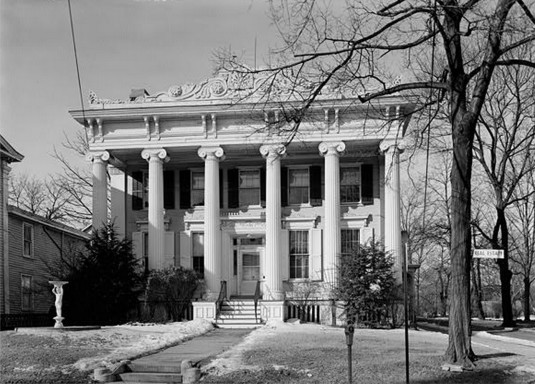Today I am returning to the buildings on the east side of Flemington’s Main Street that feature an arch along the front of their roofs, in particular, the two buildings constructed by John C. Hopewell, one on either side of the bank building that he put up in 1866 (See Flemington’s First Bank).
Downtown Flemington
Flemington’s First Bank, part 3
Flemington’s First Bank, part two
This article is my somewhat-delayed return to the subject of the grand old building on Flemington’s Main Street built by John C. Hopewell for Flemington’s first bank, the Hunterdon County National Bank. (See Flemington’s First Bank.)
Flemington’s First Bank
My last article described the political turmoil in Hunterdon County in the 1850s. There was another kind of turmoil going on at the same time, an economic one. For Hunterdon that meant a local bank was needed.
Hunterdon Businesses in 1850
One never knows when an article by Egbert T. Bush might come in handy. In this case, it turns out to be very handy for the research I am doing on Flemington in the 19th century.
A Store, A Bank, A Mansion
After existing for 166 years, through the thick and thins of the American economy, the Hunterdon County National Bank that once was a mainstay on Flemington’s Main Street was taken over by a much bigger national bank in 1983. The HCNB had occupied its beautiful building for nearly that long, about 157 years.
Hunterdon’s Courthouse, 1828
Observers of Hunterdon history on Facebook have called our attention to the anniversary of the fire that destroyed the Hunterdon County Courthouse on February 13, 1828. This inspired me to look at the Hunterdon Gazette for 1828 to see how people reacted to this disaster.
Fisher-Reading Mansion

Beautiful, isn’t it? One of the most extraordinary buildings to be found in Flemington, a town with more than its share of great old buildings. It is an outstanding example of Greek Revival architecture.1
Samuel Green Opdycke Esq.
“Ascending!
FINDING the room on the first floor of the Court House rather too much confined for an office, and the passage too much obstructed by lockage for the free ingress and egress of clients, I have selected, for a summer office, a beautiful airy chamber in the extreme front of the building. This pleasant apartment is situated immediately over the portico of this lofty edifice, and overlooks the main street of the village; After rising three inclined planes, clients will arrive at the summit level of my office; the door opens toward the east between two windows; No toll demanded until they arrive at the summit. – Passage back, free of expense; Samuel G. Opdycke, Flemington, May 19, 1830.”1